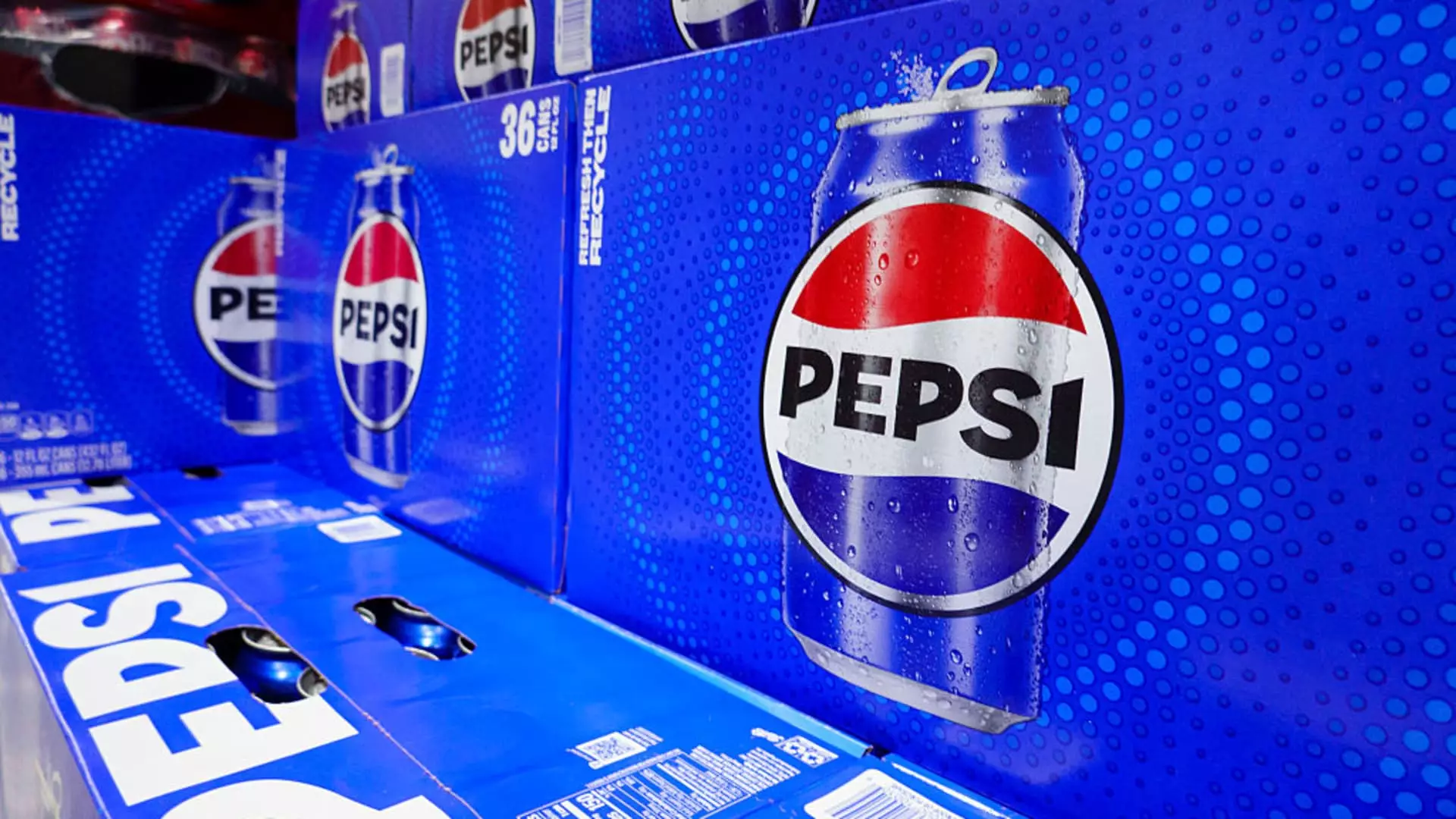PepsiCo’s most recent quarterly report appears superficially encouraging, with both earnings and revenue surpassing analyst expectations. Yet, a closer examination reveals that this success is largely superficial, masking deeper issues lurking beneath the surface. The company’s adjusted earnings per share of $2.12 and revenue of $22.73 billion—though impressive at face value—do little to hide the reality of stagnating demand and a still-fragile consumer market. While executives highlight tweaks in strategy aimed at capitalizing on healthier snacking trends and leveraging multicultural offerings, these are merely temporary patches on a sinking ship desperate for true innovation and market relevance.
The North American market, which historically has been Pepsi’s bread and butter, remains a battleground of declining volumes. A 2% reduction in drink volume and a 1% shrinkage in food sales for the region signal ongoing struggles that cannot be masked by slight upticks in certain segments like Pepsi Zero Sugar. It’s clear that despite marketing spin and strategic realignments, consumer fatigue and shifting preferences are chipping away at established brands. The notion that market demand will rebound simply because of minor product updates is a fantasy—one that ignores broader economic realities, where inflation, inflationary pressures, and economic uncertainty dampen consumer spending power.
Cost-Cutting and Restructuring: A Short-Term Fix or Sign of Deeper Problems?
Pepsi’s decision to close two manufacturing plants and improve logistics efficiency indicates its reliance on aggressive cost-cutting tactics. While such measures might temporarily bolster profit margins, they are symptomatic of a company trying to patch over structural weaknesses rather than addressing root causes of decline. The move to streamline operations suggests a realization that organic growth alone cannot sustain its current trajectory. These actions, though necessary, risk eroding brand integrity and customer satisfaction if executed improperly.
Furthermore, the company’s attempts to optimize marketing spending, refocus product placement, and cut redundancies between its food and beverage divisions are pragmatic responses but also hint at underlying operational inefficiencies. If the core product lineup—largely based on legacy staples—fails to adapt rapidly to consumer shifts, these internal cost measures are akin to rearranging deck chairs on a sinking ship. Reserve judgment here: these are tactical maneuvers, not strategic solutions.
The Question of Sustainability in a Changing Consumer Landscape
Pepsi’s focus on healthier snacks and protein-rich offerings demonstrates an awareness of the evolving food industry landscape. However, this presumes that consumers will increasingly favor these options consistently, which remains uncertain. Trend-driven markets are notoriously volatile; what’s popular today may be obsolete tomorrow. Moreover, efforts like relaunching classic products such as Lay’s and Tostitos to emphasize their original ingredients are well-timed but not enough to guarantee a sustained turnaround.
From a broader economic perspective, Pepsi’s conservative forecast—expecting minimal growth for the remainder of the year—exposes the fragility of its current position. The company’s caution is justified, as it navigates tariff impacts, geopolitical instability, and the cautious consumer. Yet, it also indicates that Pepsi remains dependent on marginal improvements because its core business is under siege from both competition and consumer tastes that are increasingly skewing away from processed snacks and sugary drinks.
Strategic Outlook: Is It Enough to Save the Brand?
While CEO Ramon Laguarta’s optimism about future rebounds might inspire short-term investor confidence—evidenced by the 6% rise in shares—this sentiment must be tempered by skepticism. Peering into the strategic plan, it’s evident that Pepsi’s efforts are reactive rather than proactive. The company seeks incremental gains through repositioning existing products, cost reductions, and marginal innovation. These are necessary, but insufficient, in a market demanding disruptive change and genuine value propositions.
Ultimately, Pepsi’s current path resembles a defensive maneuver in a winning game—not an aggressive play to dominate. It’s fighting to maintain its foothold rather than boldly transforming into a resilient, future-proof powerhouse. For a company with its resources, this approach feels like a missed opportunity—settling for small victories while neglecting the need for radical innovation and strategic overhaul to survive the next decade.

